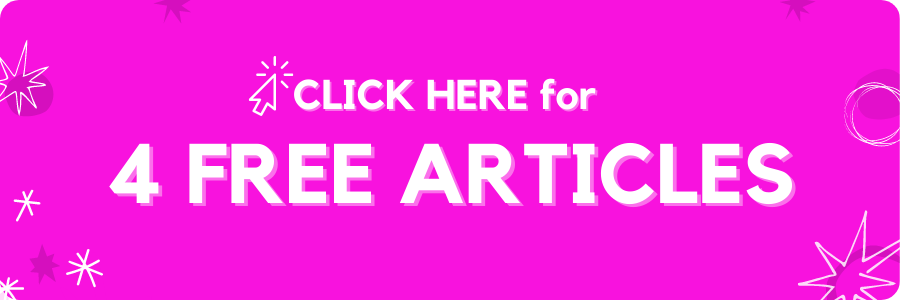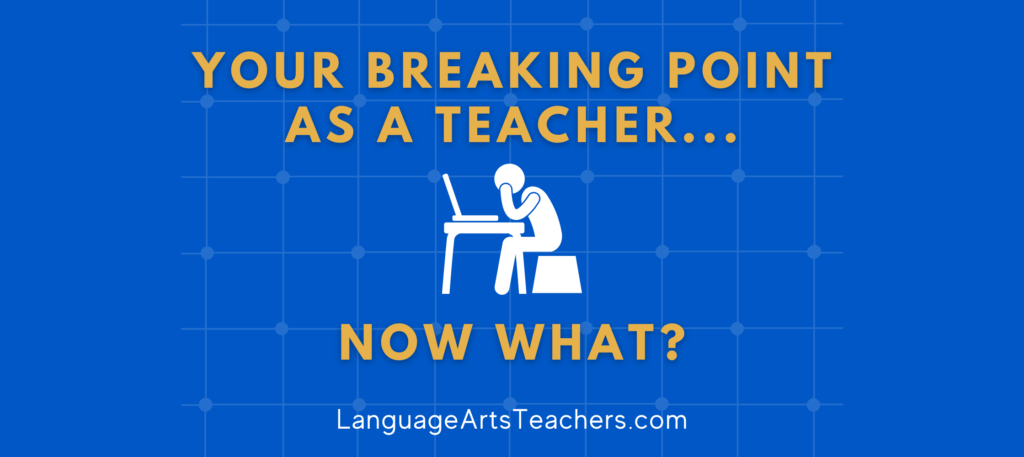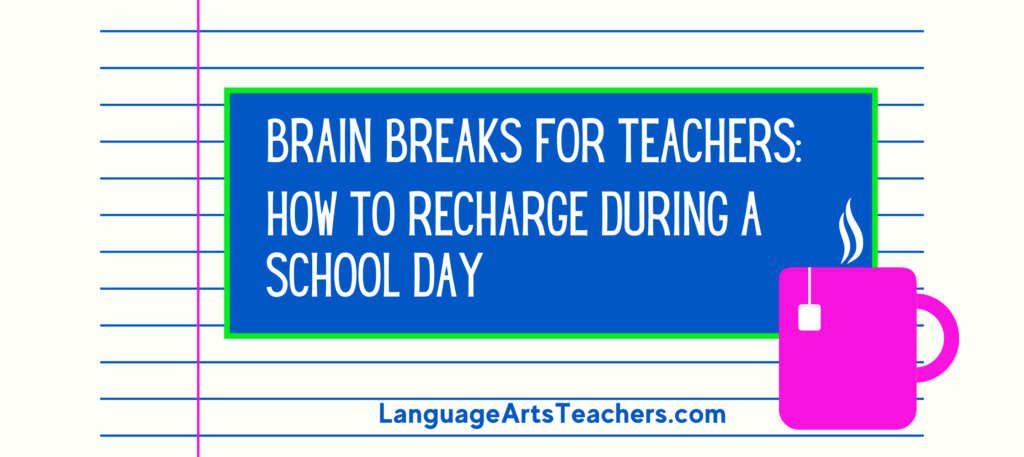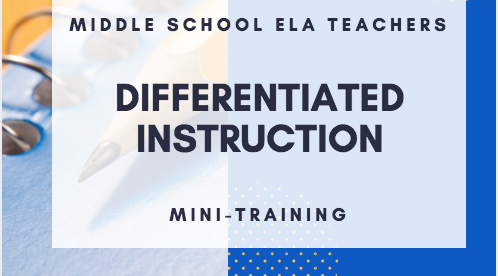Teaching Middle School English Language Arts (ELA) demands more time, energy, and dedication than any other grade level or subject area (forgive my bias—just speaking from personal experience here)!
* Hundreds of students at one time that we’re responsible for
* Grading writing and essays in lieu of multiple choice responses
* Reading, writing, grammar, vocabulary, spelling, speaking, listening, research, and alll the genres
^ ^ Does any other subject area feel the pressure of all that?
Staying motivated and productive all the time is daunting if not totally impossible — hello, burnout and fatigue.
It’s crucial for us as Middle School ELA/R teachers to learn how to manage our time and energy effectively to work smarter rather than harder. Yes, it’s easier said than done, but we can explore practical tips and strategies to help us stay focused, organized, and motivated while managing our workload.
Whether you’re a seasoned teacher like me with 20+ years experience, or just starting out in the education field, the practical tips and strategies I’m sharing here should help you gain back at least a few hours a week. Let’s dive in!
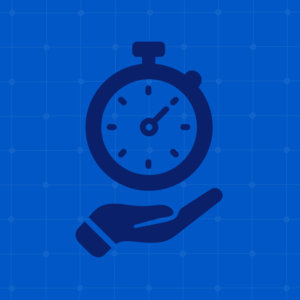
Strategies for Maximizing Productivity: Deep vs. Shallow Thinking, Prioritization, and Delegation
As a teacher, it’s easy to get overwhelmed by the number of tasks that need to be accomplished every day. There are several strategies, however, that can help maximize productivity and minimize burnout.
My favorite is Deep vs. Shallow Thinking, which involves breaking down your planning period throughout the week into manageable chunks of tasks that require either deep thinking or shallow thinking. The benefit here is that instead of mentally exhausting yourself with constant tasks that require a lot of energy and brain power, split up those kinds of tasks over a period of several days so you’re not thoroughly DONE by Tuesday. For instance, I won’t schedule grading essays (deep thought) and planning the introduction of a new unit (also deep thought) for the same 45 minute planning period. It would leave me mentally exhausted. Instead, I would pair a deep thought activity with a surface-level activity to give my brain a break! This way, I can plan out what that looks like over the course of a week of planning periods.
If it’s helpful to you, here’s an example of what a typical week looks like for me based on deep-thought vs. surface-level thought in my 50 minute planning periods:
Monday ⇒ Enter grades (surface level) + plan next week’s bell ringers (deep thought)
Tuesday ⇒ Finish entering grades (surface level) + plan next week’s quiz (deep thought)
Wednesday ⇒ Grade late work / makeup work / re-do’s (deep thought) + enter those grades (surface level)
Thursday ⇒ Plan + schedule next week’s mini-lessons (deep thought)
Friday ⇒ Upload and / or print out next week’s assignments for class (surface level)
Prioritization is another key strategy that can help you maximize productivity. It involves identifying the 3 – 5 most important tasks and completing them first for the week, so you can focus on the less critical tasks later. This way, you can ensure that you’re making progress on the most important tasks while also taking care of the less urgent ones.
For instance, understanding the priorities is what leads me to create and plan what tasks I’ll do each day of my planning period as I laid out in the section above. I actually had a whole list of to-do’s for the week, but I was realistic in knowing that it would be totally impossible to actually get them all done. What really mattered was the following (look at what I crossed out and decided not to do):
Yes, ^all those things I crossed out because I decided NOT to do them that week ARE important, but here’s the thing . . . They weren’t urgent that week. The other five tasks were urgent.
Did it mean I fell behind?
Did it mean I got “in trouble” for not completing or submitting something?
No, not at all, because so often, we put those mandates on ourselves instead of feeling confident that we can:
- Say no to ourselves and to others
- Plan and prioritize with strategy
- Let someone on the other end know when to expect a deliverable rather than allowing that someone to pressure us into making THEIR priorities OUR priorities
Finally, delegation is also an essential strategy for maximizing productivity. As a teacher, you don’t have to do everything yourself. You can delegate some tasks to your colleagues or even your students.
Pro Tip: If someone else can complete a task to 80% of the “perfection” level you would have completed it yourself, then call it a win—call it done! There is no perfection really, and in the grand scheme of things, it’s an unrelatable and unattainable concept that gives no payback in dividends.
Anyway, as for delegation, you can assign a student to take care of the classroom’s organization or ask a colleague to help with that new program you were asked to initiate. I know I’d rather help a colleague with a program they’ve been asked to lead than to completely head up a new one on my own. I love being able to tell the “powers that be” that no, I don’t have room on my plate for that new program or for that new extracurricular, because “I’m dedicated to helping so-and-so this year with the ________ that we’re spearheading.” See how easy and genuine that is?
Delegation not only helps you save time, but it also helps you develop the leadership and communication skills necessary for effective teaching in a world where SO much is asked of you.
Tools and Apps for Time Management and Energy Management
In addition to the above strategies, several fun tools and apps can help us teachers manage our time and energy effectively. Don’t spend too much time trying to use them all, though! Ironically, that would defeat the purpose. Here are a few of my personal favorites that I use to track, organize, and plan both my teaching life AND my personal life:
- Trello, a project management tool that helps you organize your tasks and stay on top of deadlines. With Trello, you can create boards for each project, add tasks, set deadlines, and assign tasks to team members (or family members). This makes it easy to stay organized and productive throughout the course of a project.
- Another useful app for time management is RescueTime. This app tracks the time you spend on various tasks and provides you with a detailed report on how you’re spending your time. This way, you can identify time-wasting activities and make adjustments to your schedule accordingly (my older students find it fascinating, too)!
- For energy management, meditation apps such as Headspace and Calm can be invaluable. These apps provide guided meditations that help you relax, reduce stress, and improve focus. Other apps like Sleep Cycle can help you monitor your sleep patterns and ensure that you’re getting enough rest to be productive throughout the day. The SleepCycle app was mind-blowing to me. I actually had to delete it because it was TOO interesting, if that’s possible!
Tips for Balancing Work and Personal Life
Balancing work and personal life can be a challenge for teachers, especially during busy periods when you don’t “feel” like you can take time away. But you absolutely have to recharge. My best go-to tip is to set boundaries for your work hours. This means establishing specific times when you’ll be working and sticking to them. It also means avoiding work-related activities outside of those hours, such as checking and responding to emails. The easiest way to take care of that is to have an automated message go out during weekends or holidays to let parents or other colleagues know that you received the message, and that you won’t be able to respond until X date.
Here’s what my own looks like:
Hi there!
Thanks for your email 🙂 It’s been received, and when I’m back on my computer during my next scheduled planning period after the weekend (or after the break), I’ll be able to respond.
All my best,
Mrs. Kebart
Making the Teacher Lifestyle a Sustainable Lifestyle
If you only take one or two tips here, my hope is that you can end up with a couple extra hours of time that energize you each week. Not checking your school email outside of contract hours ALONE could save you an entire Sunday afternoon of stress. ⇒ I learned that one after I checked my school email one Sunday afternoon early in my teaching career to “get ahead of things” before Monday. A horribly mean email from an angry parent had come through the day before, and the time and energy it took from what was supposed to be a relaxing Sunday was NOT worth it! There is no benefit to getting ahead by clearing out your email inbox when it zaps your energy and time outside of the school day. The problem was that I felt doubly-stressed out from that email because it took over my Sunday afternoon. If I had waited until Monday during my planning period to check my email, then I would have been in a mentally stronger state to where I could connect with a co-worker first before responding, or get feedback from the student in question in order to gain a little more information before crafting the return message. But on a Sunday afternoon, I couldn’t really do that and so I allowed my “Let’s get ahead for Monday” idea to ruin the rest of a perfectly nice day.
Bottom line ⇒ Without prioritizing, delegating, and setting boundaries, there will be no balance or harmony between work and life as a teacher.
How much time would you save if ALL your Mondays for the year were already planned out? Grab 4 weeks of my nonfiction article collection completely free! If you assign one per week on Mondays, then that’s a whole month’s worth of Mondays you don’t have to plan for!

